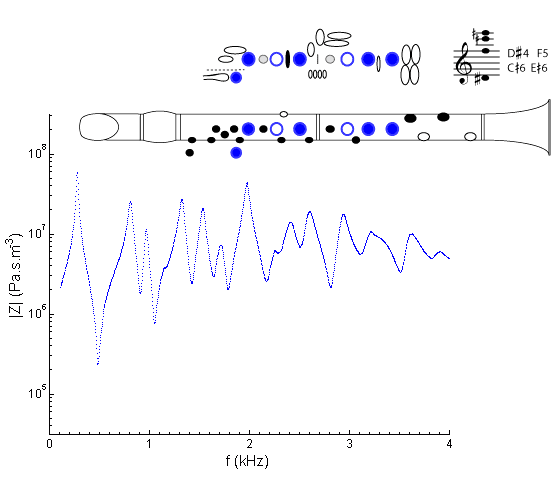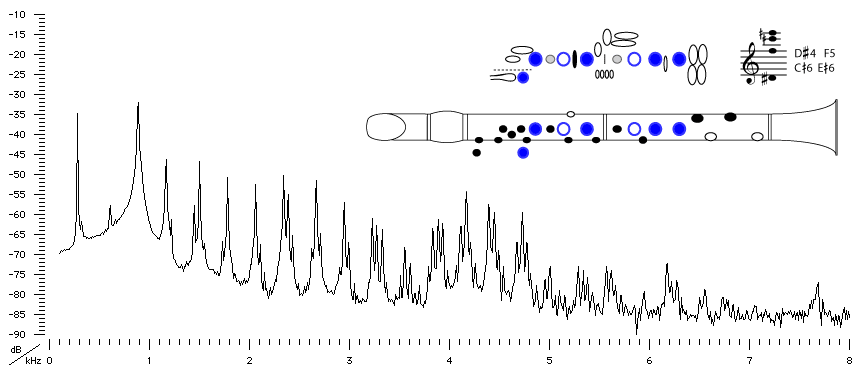| Acoustics of the saxophone |
Bb saxophone |
multiphonic
|
|

|
Fingering Acoustic schematic Non-specialist introduction
to acoustic impedance Notes are the written pitch. |
Here, the D#4 may be considered as produced by a variant of the E4 fingering, with cross fingering to make it flatter. The F5 may be considered as a peculiar perturbation fingering for G5, with cross fingering and a poorly placed register key. It is difficult to explain the higher notes by such simplistic means: once we are at or above the cut-off frequency, the whole bore is involved.

Sound spectrum
of a Bb saxophone
played using fingering for the multiphonic D#4, F5, C#6 and E#6 .
For more explanation, see
Introduction to saxophone acoustics
![]()
![]() You can hear the multiphonic D#4, F5, C#6 and E#6
played.
You can hear the multiphonic D#4, F5, C#6 and E#6
played.
|
Contact:
Joe Wolfe
/ J.Wolfe@unsw.edu.au |